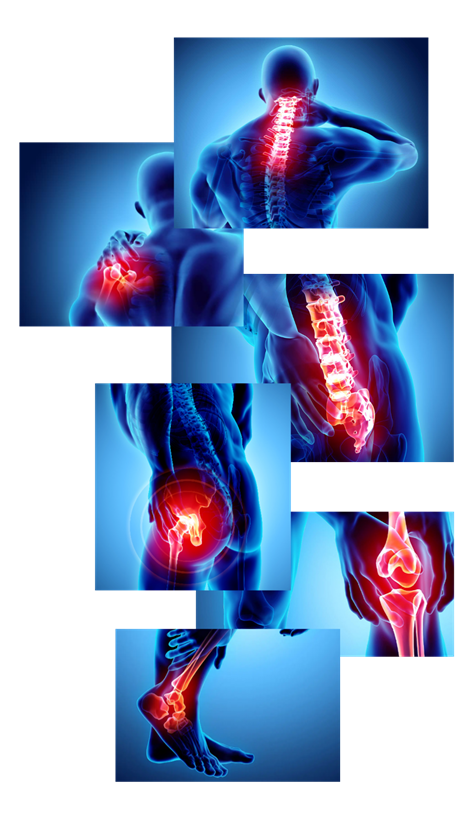
Our Creational Concept
Physical therapy is a regulated health care profession concerning, identifying and maximizing quality of life and movement. This encompasses physical, psychological, emotional, and social well being. Typically aims of the Physiotherapy could be:
• Reduction of pain
• Improvement of joint movement
• Strengthening and stretching the muscles
• Optimize the coordination, balance, the way and security of motion
• Education of activities in everyday life
• Collection of home exercise
*These goals can be reached through passive or active physiotherapy techniques.
Main fields of Physiotherapy:
Physical therapy is a regulated health care profession concerning, identifying and maximizing quality of life and movement. This encompasses physical, psychological, emotional, and social well being. Typically aims of the Physiotherapy could be:
• Reduction of pain
• Improvement of joint movement
• Strengthening and stretching the muscles
• Optimize the coordination, balance, the way and security of motion
• Education of activities in everyday life
• Collection of home exercise
*These goals can be reached through passive or active physiotherapy techniques.
Main fields of Physiotherapy:
• Traumatology
• Orthopedics
• Neurology
• Pneumonology
• Geriatrics
• Pediatric
• Gynecology
• Sports
Our therapy options:
• Orthopedics
• Neurology
• Pneumonology
• Geriatrics
• Pediatric
• Gynecology
• Sports
Our therapy options:
• Trigger Point Dry Needling
• Manual Therapy (Joint Mobilization)
• Kinesiotherapy (Movement Therapy)
• Therapeutic & Sports Massage
• Dry Cupping Therapy
• Kinesio Taping Method
• Therapy Units:
• Manual Therapy (Joint Mobilization)
• Kinesiotherapy (Movement Therapy)
• Therapeutic & Sports Massage
• Dry Cupping Therapy
• Kinesio Taping Method
• Therapy Units:
› Electrotherapy
› Magnetic Field Therapy
› Ultrasound Therapy
› Shock Wave
› Cervical-Lumbar Spine Traction
› Magnetic Field Therapy
› Ultrasound Therapy
› Shock Wave
› Cervical-Lumbar Spine Traction
Evaluation: The evaluation typically takes place on the patient’s first visit and includes an examination, which consists of a review of historical data and symptoms as well as performance of tests and measurements. It is at this point that the therapist provides a diagnosis and prognosis. (Therapists should perform a reevaluation only if the patient’s condition or functional status changes unexpectedly).
